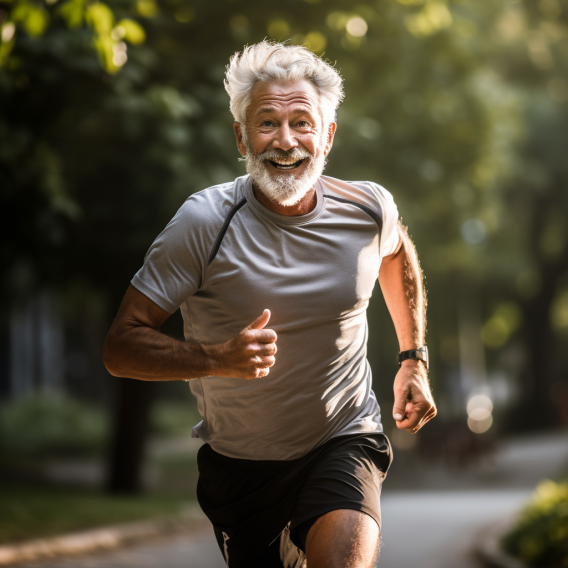Aging is a natural part of life, and while it comes with certain changes in the body, it doesn’t mean giving up on physical activity. In fact, staying active as you grow older is crucial for maintaining physical and mental well-being. In this comprehensive guide, we will explore the importance of physical activity in aging, the benefits it offers, and practical tips for incorporating exercise into your daily routine. With the right approach, you can enjoy an active and fulfilling life throughout your golden years.
Introduction
Aging is an inevitable process that brings both wisdom and unique challenges. While it’s true that our bodies change with age, it doesn’t mean that physical activity should take a back seat. In fact, staying active is key to promoting health and well-being as you grow older. This guide will provide you with insights, tips, and motivation to maintain an active and fulfilling life.
The Importance of Staying Active
Physical Benefits
Regular physical activity offers numerous physical benefits for seniors:
- Strengthens Muscles: Exercise can help maintain muscle mass and bone density, reducing the risk of falls and fractures.
- Supports Cardiovascular Health: Staying active can help manage blood pressure, cholesterol levels, and reduce the risk of heart disease.
- Enhances Mobility: Regular movement and flexibility exercises can improve joint health and maintain mobility.
- Weight Management: Physical activity helps control body weight and prevent obesity, which is linked to various health issues.
- Pain Management: Exercise can alleviate chronic pain conditions and improve overall comfort.
Mental Health Benefits
Exercise is not just about physical health; it has significant mental health benefits as well:
- Mood Enhancement: Physical activity triggers the release of endorphins, which can improve mood and reduce symptoms of depression.
- Cognitive Function: Regular exercise is associated with better cognitive function and a reduced risk of cognitive decline.
- Stress Reduction: Exercise can be a stress-reliever, helping to manage stress and anxiety.
- Enhanced Sleep: Staying active can lead to improved sleep quality and better rest.
Exercise Guidelines for Seniors
Types of Exercise
A well-rounded exercise routine should include four main types of activities:
- Aerobic Activities: These exercises, such as walking, swimming, or dancing, get your heart rate up and improve cardiovascular health.
- Strength Training: Lifting weights or using resistance bands can maintain muscle mass and strength.
- Flexibility and Balance Exercises: These activities, including yoga and tai chi, improve flexibility and balance, reducing the risk of falls.
- Low-Impact Exercises: Gentle activities like walking or using an elliptical machine are easier on the joints.
Frequency and Duration
The American Heart Association recommends at least 150 minutes of moderate-intensity aerobic exercise or 75 minutes of vigorous-intensity aerobic exercise each week. Strength training exercises should be performed at least two days a week.
Safety Considerations
Safety is a top priority for seniors engaging in physical activity. It’s essential to:
- Start slowly and progress gradually.
- Consult with a healthcare provider before starting a new exercise program.
- Stay hydrated and wear appropriate clothing.
- Listen to your body and stop if you experience pain or discomfort.
Common Barriers to Exercise
Addressing Mobility Issues
Mobility issues can be a barrier to exercise, but there are ways to work around them:
- Seek guidance from a physical therapist for tailored exercises.
- Consider water-based activities that provide buoyancy and reduce joint impact.
- Use assistive devices like canes or walkers if needed.
Overcoming Motivation Challenges
Motivation can be a challenge for people of all ages. To stay motivated:
- Find an exercise buddy to work out with.
- Set specific, achievable goals.
- Create a routine that you enjoy, whether it’s dancing, swimming, or gardening.
Choosing the Right Activities
Low-Impact Exercises
Low-impact exercises are gentle on the joints, making them ideal for seniors. These activities include:
- Walking: A simple yet effective exercise for overall health.
- Cycling: Offers cardiovascular benefits without stressing the joints.
- Swimming: Provides a full-body workout with minimal joint impact.
Strength Training
Strength training is vital for maintaining muscle mass and strength:
- Bodyweight Exercises: Simple exercises like squats, push-ups, and planks can be done at home.
- Resistance Bands: These versatile bands can be used for strength training without heavy weights.
Flexibility and Balance
Flexibility and balance exercises are crucial for preventing falls:
- Yoga: Promotes flexibility, balance, and relaxation.
- Tai Chi: An ancient practice that improves balance and reduces the risk of falls.
Aerobic Activities
Aerobic exercises promote cardiovascular health:
- Dancing: Fun and social, dancing is an excellent aerobic activity.
- Walking Groups: Join a local walking group for motivation and social interaction.
Tips for Getting Started
Consult with a Healthcare Provider
Before starting a new exercise program, consult with your healthcare provider, especially if you have underlying health conditions. They can provide guidance and recommendations based on your individual needs.
Set Realistic Goals
Set achievable goals that align with your fitness level. Tracking your progress can help you stay motivated as you achieve these goals over time.
Find an Exercise Buddy
Exercising with a friend or family member can make it more enjoyable and hold you accountable.
Make It a Part of Your Routine
Integrate exercise into your daily life by scheduling it into your routine. Consistency is key to reaping the benefits of physical activity.
Staying Motivated
Reward Yourself
Celebrate your achievements and progress. Rewards, such as enjoying your favorite healthy meal or treating yourself to a movie night, can boost motivation.
Track Your Progress
Keep a record of your workouts and improvements. Tracking your progress can be a source of motivation and help you identify areas that need adjustment.
Conclusion
Staying active as you age is an investment in your physical and mental well-being. Exercise is a powerful tool for promoting longevity, maintaining mobility, and enhancing overall quality of life. By following exercise guidelines, addressing common barriers, and choosing the right activities, you can enjoy the countless benefits of staying active in your golden years. Remember that it’s never too late to start, and every small step you take is a step towards a healthier, more fulfilling future.



